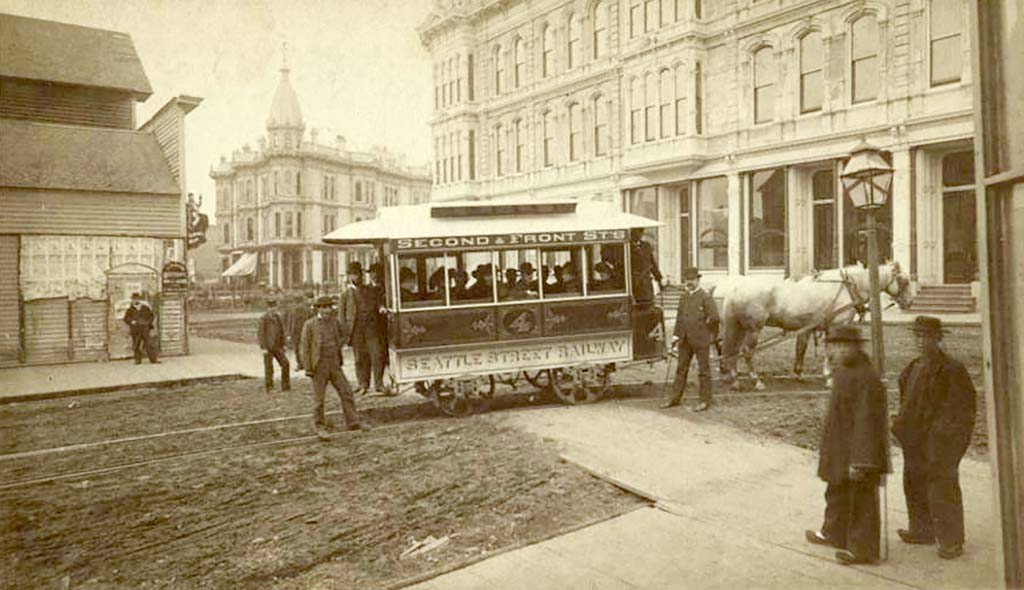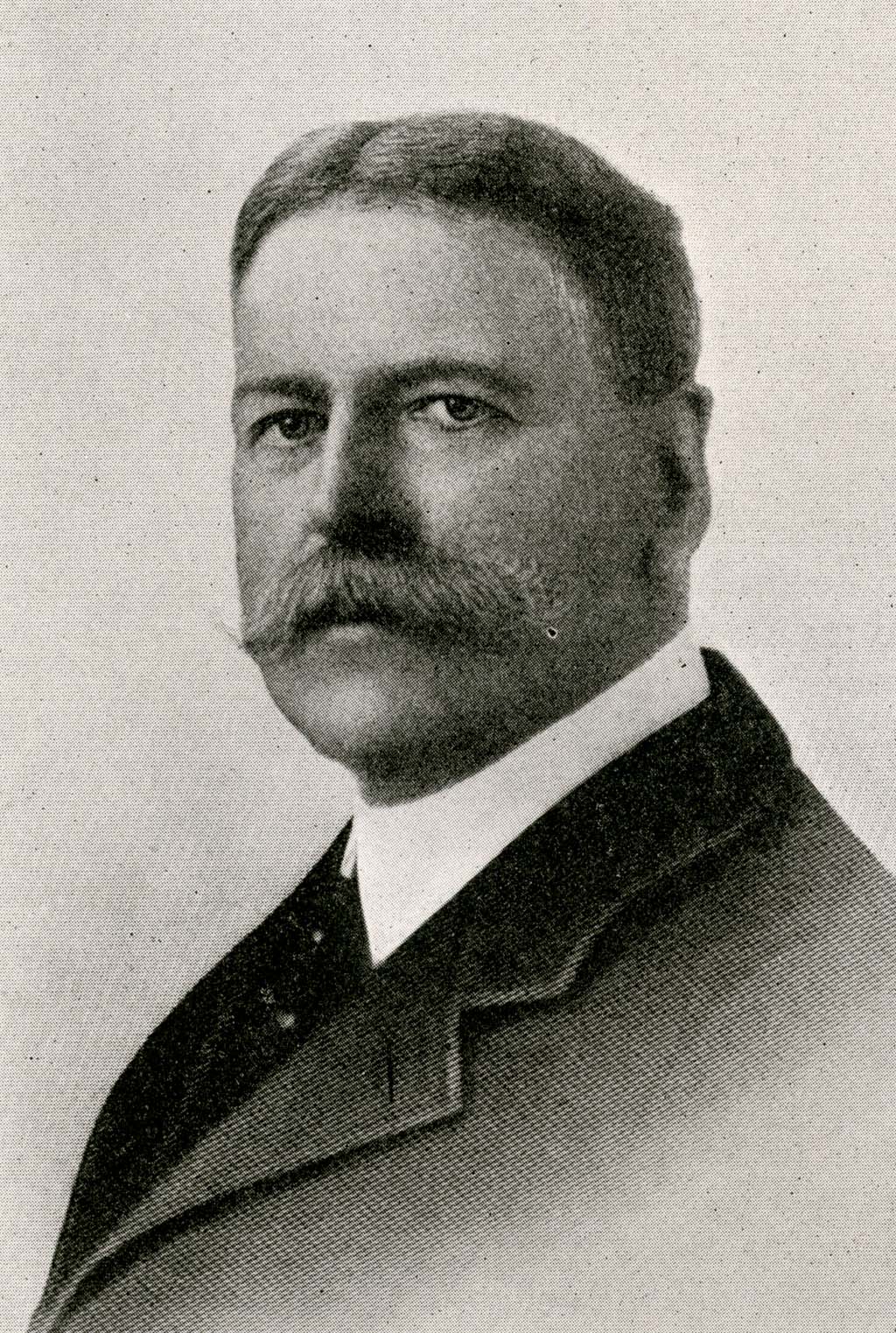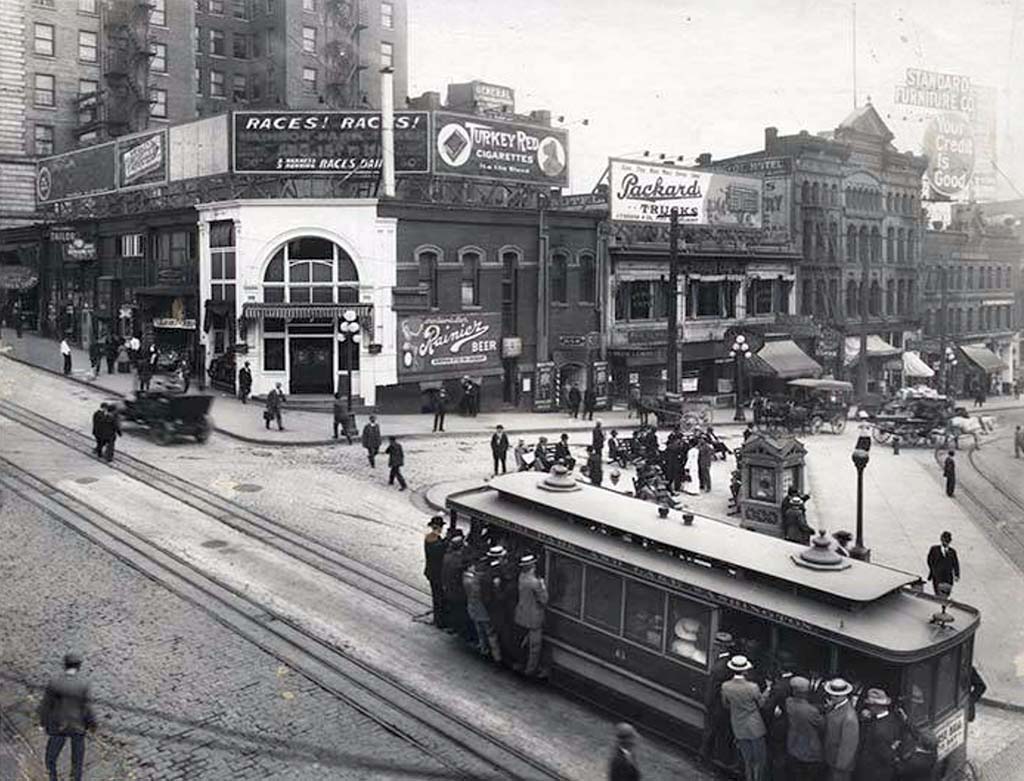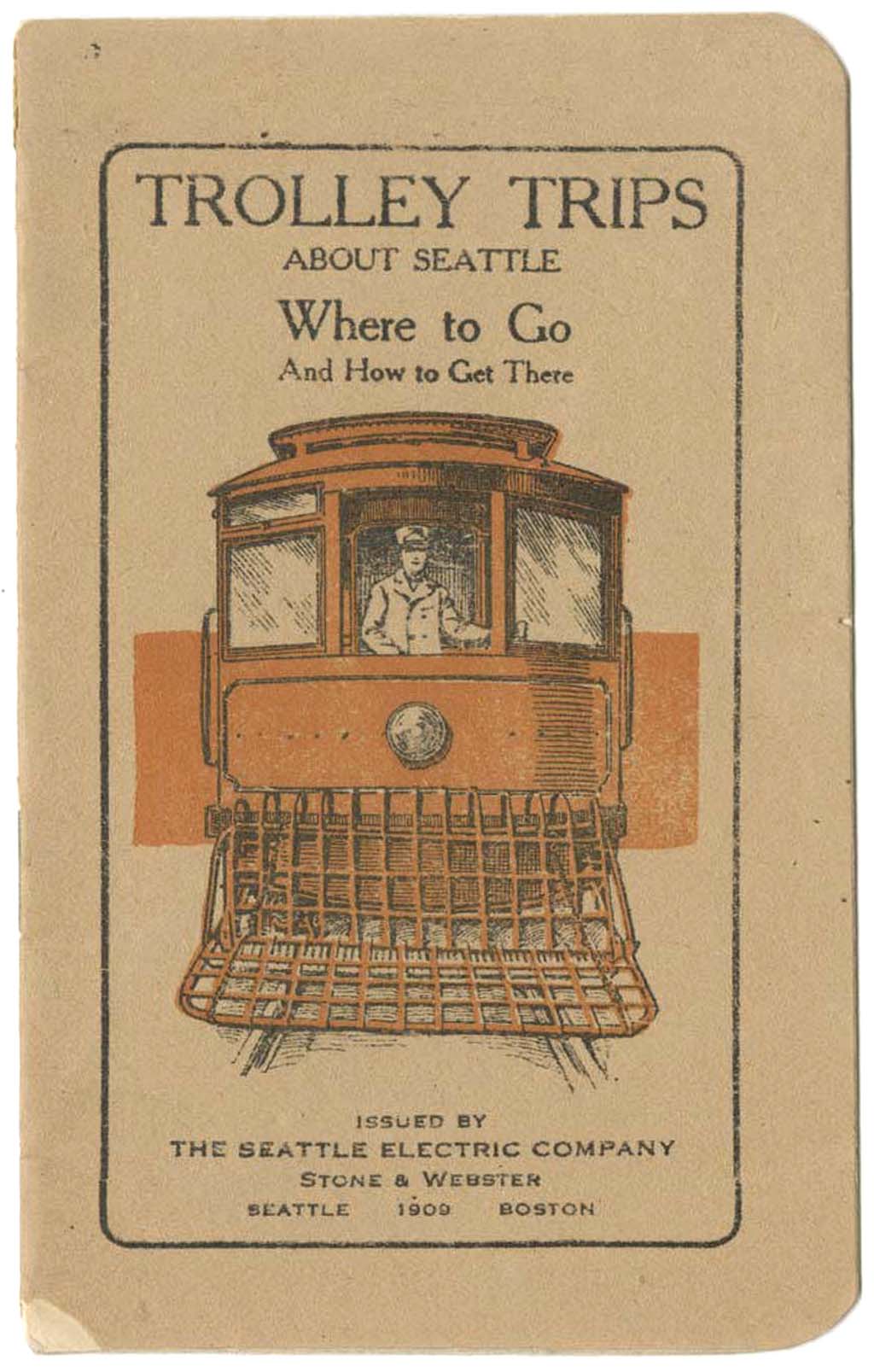-----
 |
| The first horsecar to run in Seattle, Sept. 23, 1884 (Historylink.org) |
 |
| Frank Osgood, real estate investor and HG Wells impersonator (Bagley, History of King County) |
For a nickle, people could shed the mud from their boots and ride aboard smooth rail, which made the 2nd Avenue Line an instant hit. Spurred by the success, Osgood was able to invest enough capital to electrify the horsecars and gave Seattle its first electrified streetcar line by 1889. Mass transit began to boom shortly after as J.M Thompson and a familiar Fred Sander (who would establish the Puget Sound Electric Railway) founded a cable car line from Pioneer Square to Leschi Park via Yesler Way and Jackson Street. Based on the San Francisco conduit system, the new cable connected Puget Sound ferries at Elliot Bay with Lake Washington Ferries on the other side of the city. Not only was this the first cable railway in Seattle, it was probably the first intermodal transit system in America!
 |
| Yesler Way "California Car" at Forston Square and 2nd Avenue, 1912 (Historylink.org) |
This period of conglomeration would begin in 1898, when Jason Furth began buying up all 22 companies on behalf of his employer, Stone and Webster. As mentioned before, Stone and Webster (S&W) also gained ownership of Sander's Seattle Electric Railway (SE) and completed its construction, but the city looked none too kindly upon its new transit owners. In 1900, the city granted S&W a 40-year franchise, and immediately people began yelling that they were under a monopoly, fighting words in the Gilded Age. Nothing ever came of this, and S&W were allowed to consolidate their holdings into the Puget Sound Power, Light, and Traction Company.
:no_upscale()/cdn.vox-cdn.com/uploads/chorus_asset/file/13698049/2863.png) |
| A streetcar belonging to the Seattle Central Railway, 1901 (Seattle Municipal Archives) |
In 1911, Seattle Electric failed to buy the Seattle-Renton Interurban Railway (on the South Tip of Lake Washington). Passengers were already not pleased with the street railway's doings, citing aging equipment and erratic schedules, and the mandated nickel fare (which blocked fare increases), streetcar strikes (the biggest of which occured in 1917), and competition from jitney and city buses forced S&W into a quandry. The establishment of the first municipal car line, the Municipal Street Railway, or Seattle Muni) between Downtown and Ballard certainly did not help, as what West Seattle started was soon growing support all over the city.
 |
| Mayor Ole Hanson, photographed in 1919 (Seattle Municipal Archives) |
 |
| A 1909 Seattle Electric guidebook, published by Stone and Webster (HistoryLink.Org) |
-----
Thank you for reading today's Trolley Tuesday! on Thursday, we look back on the interesting dilemma a city faces with its own street railway and maybe even glimpse some of the cars used in operations. This Friday, we'll also have two bonus From the Archives posts (which will now be a regular thing, if I wanna move all my posts from Twitter on here.) Until then, ride safely!

No comments:
Post a Comment